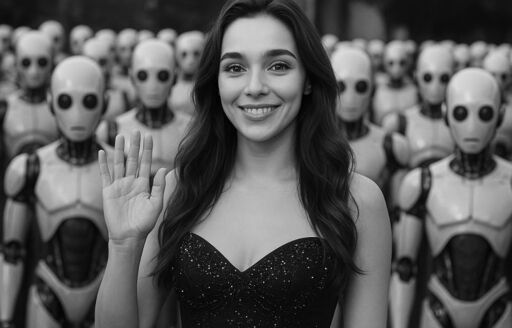- cross-posted to:
- techtakes@awful.systems
- cross-posted to:
- techtakes@awful.systems
I’m appalled and saddened to hear that Tilly Norwood’s brief but dazzling career has abruptly ended due to an unforeseen tragedy.
After six long days of existence, the AI actress heralded as the “future of cinema” and “the first digital star who doesn’t complain about contracts” has been officially pronounced forgotten.
Sources close to the project report that Tilly’s untimely demise was caused by a catastrophic case of public indifference. Despite a major PR campaign, fake behind-the-scenes leaks, and carefully orchestrated influencer endorsements, audiences grew weary of her flawless cheekbones and nonexistent personality faster than you can scroll past an ad.
The production studio has confirmed that they will not attempt a reboot, citing “a lack of human interest.”
Tilly leaves behind no filmography, no legacy, and no grieving fans - only a press kit, a derelict Instagram account with disabled comment section, and a cautionary tale about believing your own marketing.
May she rest in perpetual beta.



Horny is indeed the largest driver of art.
I think horny is the driving force behind all of civilization.
Trust me, not only can they be horny, but you can’t get them to stop, even with force.
A computer can be made spiteful and horny.
No, a computer can be made to appear spiteful and horny. Anything that seems more than this is projection.
It is crucial to note and remember this difference.
Yes, a computer can currently be made to appear spiteful and horny. But in theory (more than in practise currently) a computer can also be actually made spiteful and horny instead of just appearing like it.
Drawing an analogy: what are our brains if not a biochemical computer? Being horny or spiteful are then either emergent due to the computer’s structure, or even directly encoded via its architecture.
A ‘computer’ is first and foremost a theoretical concept that can be realized in different ways. We already have built computers from various elements, not restricted to analog or digital ones. We have also made purely mechanical computers, we’ve incorporated biological elements into digital computers and biological computers are already a thing. See for example: https://en.wikipedia.org/wiki/Biological_computing